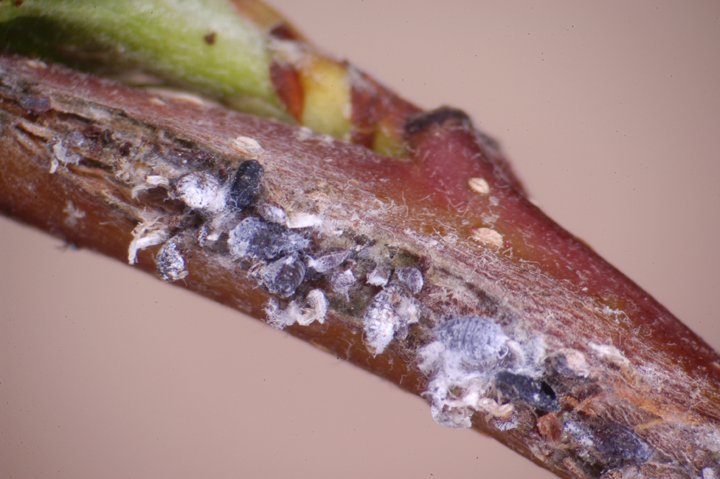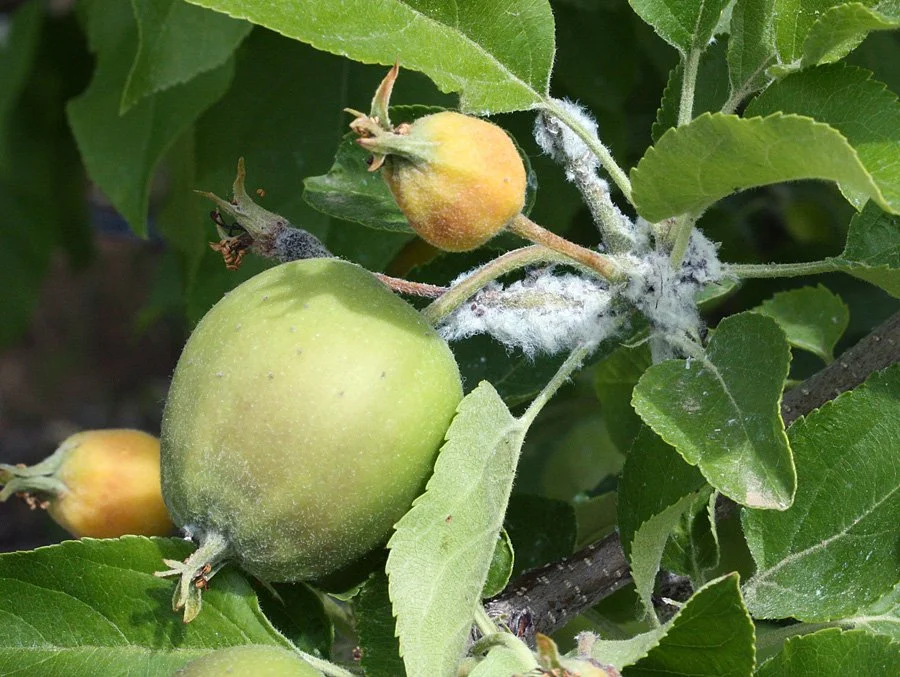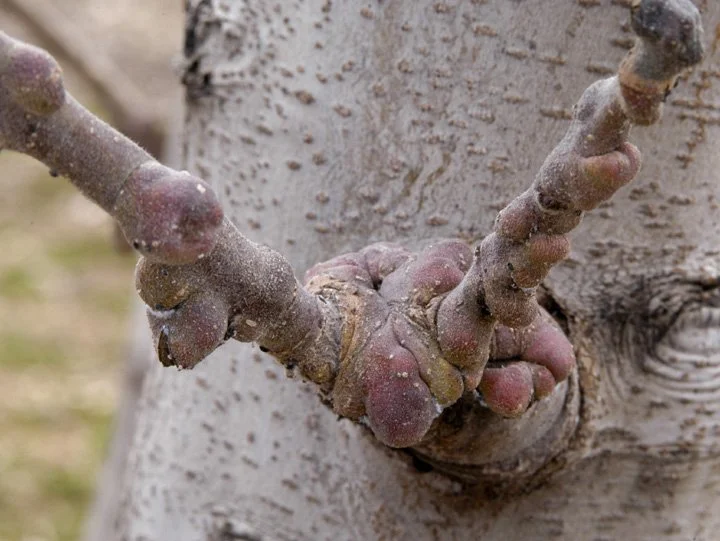Woolly apple aphids infest roots, trunks, limbs, shoots, and occasionally the fruit of apple trees. The bodies of these bark-feeding aphids are completely covered by masses of white, wool-like, waxy materials, hence its name.
For region-specific information, please contact your local Giving Grove partner. If you would like more information like this sent straight to your inbox, consider subscribing to The Serving, The Giving Grove’s quarterly newsletter.
Appearance:
Shortly after birth, the nymph is salmon colored and lacks the woolly coating. This stage is known as the crawler.
The adult is reddish-brown to purple. The actual color, however, is usually concealed beneath a white, cotton-like substance secreted from the aphid’s abdomen. This characteristic makes this aphid species easy to distinguish from other aphid species occurring on apple.
Damage:
The main injury to young and mature trees is stunting (due to the formation of root galls).
Colonies may be found feeding below the ground tree roots of susceptible rootstocks, or above ground on previously wounded sites or at the base of new foliage.
Roots of infested trees have large, abnormal swellings. Continued feeding can kill roots and cause reduced growth or even death of young trees.
If populations are high, honeydew and sooty mold will also be problems, and aphids may enter the calyx end of fruit.
Management:
Aphelinus mali is a parasite that can completely control aerial colonies. Outbreaks of woolly apple aphid are most common following the use of pyrethroids, which destroys its natural enemies.
Resistant varieties and rootstocks as well as biological controls are organically acceptable methods.
Pinch aphid infestations off terminal shoots on young trees if necessary
If a sever problem persists, utilize a pure neem oil application (.05% concentration every four to seven days)
Sources: University of California Agriculture & Natural Resources and Washington State University, and “The Holistic Orchard”




